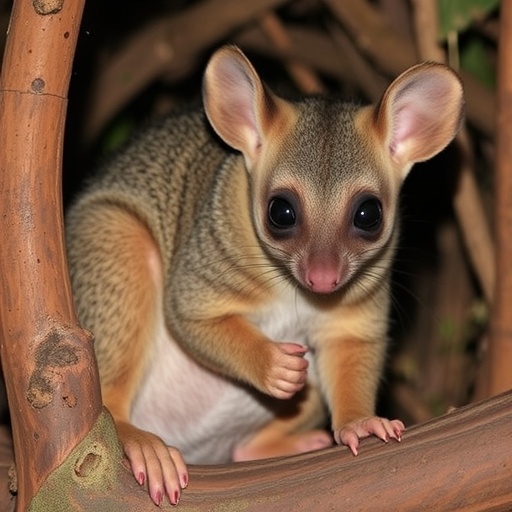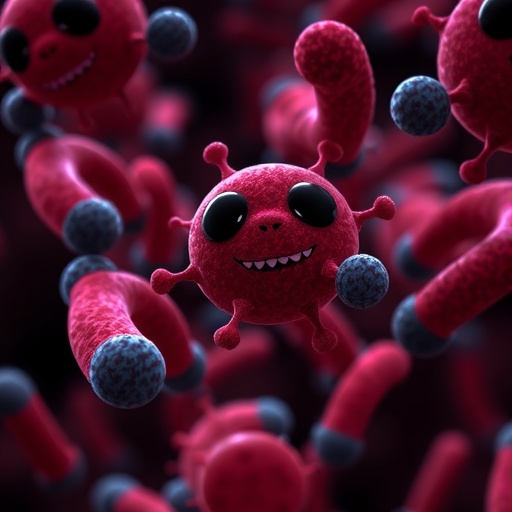In a groundbreaking study published in Science of The Total Environment, researchers from the University of Melbourne have uncovered for the first time that Australian marsupials, specifically urban possums, are contaminated with synthetic per- and polyfluoroalkyl substances (PFAS), often referred to as “forever chemicals.” These chemicals are notorious for their persistence in the environment and association with significant health issues in both animals and humans. This revelation underscores an urgent ecological and public health concern, indicating widespread environmental contamination that extends far beyond aquatic ecosystems.
PFAS represent a diverse class of synthetic compounds, characterized by strong carbon-fluorine bonds, which render them extremely stable and resistant to natural degradation processes. Historically, their industrial and consumer applications have been vast, spanning from firefighting foams and non-stick cookware to waterproof textiles and cosmetics. However, their recalcitrant nature causes them to accumulate in ecosystems, wildlife, and even human tissues, leading to mounting evidence of adverse health consequences.
The investigative team, led by PhD candidate Ellis Mackay, conducted an intensive analysis of PFAS concentrations in the livers of both common ringtail and brushtail possums residing in metropolitan Melbourne. These specimens were either euthanized on welfare grounds or found deceased due to unrelated incidents, ensuring ethical sampling procedures. Through advanced analytical techniques, the researchers identified 45 distinct PFAS compounds, with median hepatic concentrations among the highest ever recorded in any small terrestrial mammal worldwide, revealing a startling degree of bioaccumulation.
Such unprecedented findings position urban possums as critical sentinels—bioindicators signaling broader environmental contamination that may infiltrate native ecosystems. Unlike many prior studies focused primarily on aquatic species, this research extends concern to terrestrial wildlife, highlighting a significant knowledge gap regarding the environmental fate and toxicological impact of PFAS on marsupials and other land-dwelling organisms.
Despite the widespread use and environmental release of PFAS, regulatory frameworks remain inconsistent globally, with many jurisdictions only recently acknowledging the extensive risks associated with these contaminants. The Australian Bureau of Statistics’ National Health Measures Survey notably recorded PFAS presence in the blood of over 98 percent of Australians tested, emphasizing human exposure is also ubiquitous and that environmental reservoirs contribute to ongoing exposure pathways.
Professor Brad Clarke, co-author and leader of the Australian Laboratory for Emerging Contaminants (ALEC), emphasized the critical health implications tied to PFAS exposure. There is compelling evidence linking PFAS to carcinogenic outcomes, developmental abnormalities, immunotoxic effects, and other chronic conditions in various species. However, the specific mechanistic pathways by which PFAS impact terrestrial marsupials remain largely unexplored, necessitating further toxicological and ecological research.
This pioneering study opens avenues for future investigations to delineate how landscape variations, urbanization gradients, and pollutant source proximity influence PFAS bioavailability and toxicodynamics in native fauna. Understanding these spatial and ecological factors is essential to developing effective mitigation strategies and informing public policy designed to reduce environmental PFAS emission and bioaccumulation.
The persistent nature of PFAS compounds presents a formidable challenge to environmental remediation efforts. Their chemical stability resists conventional degradation processes, thereby requiring novel treatment technologies and comprehensive risk management approaches to interrupt their bioaccumulative cycle in wildlife and potentially human food chains.
The researchers underscore the importance of adopting a precautionary principle with synthetic chemical production and usage. With technological advancements enabling detection of an ever-expanding array of contaminants, actionable scientific insights must translate into regulatory reforms, emphasizing tighter control on synthetic chemical synthesis, application, and environmental discharge.
Ultimately, urban possums in Australia serve not only as vulnerable survivors within increasingly anthropogenically impacted habitats but as vital bioindicators alerting ecological and human health communities to the looming threat posed by synthetic chemical contaminants. Addressing this challenge will require multidisciplinary collaboration across environmental science, toxicology, regulatory agencies, and public health sectors.
As environmental contamination with PFAS and other synthetic chemicals continues to escalate globally, this landmark study constitutes an essential step toward revealing the extent of environmental and biological infiltration. The implications stretch beyond the Australian continent, urging a global reassessment of how emerging contaminants are monitored, managed, and remediated to safeguard biodiversity and ecosystem integrity.
Subject of Research: Environmental contamination and toxicology of PFAS in Australian marsupials
Article Title: Urban possums as sentinels for environmental contamination: First evidence of PFAS in Australian marsupials
News Publication Date: 31-Oct-2025
Web References: http://dx.doi.org/10.1016/j.scitotenv.2025.180727
Image Credits: Roy D. Mackay
Keywords: Environmental sciences, Chemistry, PFAS, Forever chemicals, Marsupials, Bioaccumulation, Toxicology, Urban ecology, Synthetic contaminants
Tags: ecological consequences of forever chemicalsenvironmental impact of PFASethical sampling of wildlifehealth risks of synthetic substancesmarsupial liver PFAS analysispersistence of environmental pollutantsPFAS contamination in Australian marsupialspublic health implications of PFASsynthetic chemicals in urban ecosystemsUniversity of Melbourne PFAS studyurban possums and forever chemicalswildlife exposure to perfluoroalkyl substances




